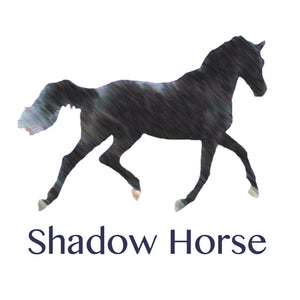Some of our products are particularly helpful in dealing with horses with specific needs or particular characteristics. Here are some of the situations where we've found our products can help.
Horses with high withers
Saddle pads
First make sure saddle cloths are shaped to fit the horse’s back allowing for high withers. Horses can have long withers too, so have a close look at your horse and choose based on his particular shape.Half pads
Half pads can be invaluable in absorbing concussion and helping rebalance a saddle, but please remember that unless you have something like mouldable memory foam, one size does not fit all If hollows are present next to the wither, the Perfect Balance technology can be ideal to fill those hollows. These pads allow the horse to build up his muscle without the saddle dropping onto his high wither – this is done with angled inserts made of highly reactive memory foam. The foam minimally alters saddle width, yet supports the saddle, while allowing your horse’s muscle the space it needs to grow and function. See all Fleeceworks Perfect Balance products
If hollows are present next to the wither, the Perfect Balance technology can be ideal to fill those hollows. These pads allow the horse to build up his muscle without the saddle dropping onto his high wither – this is done with angled inserts made of highly reactive memory foam. The foam minimally alters saddle width, yet supports the saddle, while allowing your horse’s muscle the space it needs to grow and function. See all Fleeceworks Perfect Balance products
Other useful products
Young horses knock themselves; how, sometimes no-one can tell. They also rip and tear rugs, just for fun. Not to mention having the attention span of a goldfish. We have products that can help with these charming yet infuriating aspects of the young horse too- The Kensington Protective Sheet – good luck to the youngster who tries to tear these up. Certainly our two rug destroyers haven’t managed to - and trust us they’ve tried!
- Kensington's Protective fly boots - made of the same robust, breathable material - not only protect against flies and sun, but have also proved invaluable in providing a breathable covering for horses recovering from a leg would or suffering from mud fever.
- The Kensington Breakaway Headcollar – like a leather headcollar it’ll snap when put under pressure but you can replace the broken piece in no time and carry on using it like nothing ever happened. You can turn out in it, travel in it and generally use it knowing the horse is as safe as he could be. A matching long leadrope is available. This headcollar is almost a must with young horses, and will make your life much easier
- Braideez – Plaiting young horses can be a nightmare. These really do help
Older horses
An older horse often has different requirements from a horse in its prime.
Lack of topline, dipping backs, changing shape and a lifetime of, hopefully minor, accidents. Sound familiar? All these things don’t have to be a ‘problem’ but a bit of extra help can make all the difference.
Choosing a saddle pad
Older horses may be round or have a high wither but they are quite likely to have lost some muscle, depending on age, fitness and history. It’s an unfortunate fact they change shape. We’d always go with a Fleeceworks saddlecloth as a starter to help with stability for both you and the horse and then if you need something extra we have that tooOther useful products
More years means more experience, but chances are he’s accumulated some lumps and bumps on his legs to go with his experience
Horses with sensitive skin
Like us, horses can have sensitive skin for a myriad of reasons: environment, food and genetics all contribute and it’s a puzzle to identify the cause. But of course you want your horse to be comfortable and hate to see him or her (we’ll stick with him for convenience, we love mares too) with rubbed and/or sore skin so what to do?
Rubbing under and around the saddle
This can be an infuriating area for rubs. You want to ride him, you’ve had your saddle fitted perfectly but every time you ride he gets rubbed. Some horses are just incredibly mobile, we have one of our own. Even if the saddle fits amazingly the constant small shifts under the saddle create friction and that frustrating rubbed patch. What works?Bridles – why do they rub?
One question: have you really looked at how your bridle fits?
Headpiece
Do you:
- have even pressure throughout the headpiece?
- does it push into the ears or the muscle at the base of the ears?
- what about the muscle just behind the headpiece, have you checked that?
